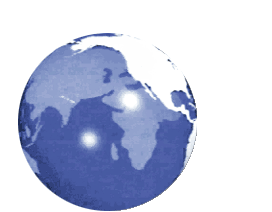 |
 |
APPENDIX 2 - TWYFELFONTEIN SITE REPORT BY SVEN OUZMAN |
6/18 |
| |
|
Site 6 – Twyfelfontein Main Site Complex |
Site A on Scherz’s Map (Site A in
Figure 14)
S 20° 35’ 31’’ / E 14° 22’ 20”
Site Description
This site complex comprises at least 4 locales and is the northernmost part of the main Twyfelfontein Site Complex. The Symbolfelsen is a large, very noticeable rock block with several small overhangs located on flat ground 50m from the eastern valley wall and has mostly Khoekhoen and some Bushman rock engravings. The access road passes within 50m of this part of the Symbolfelsen, which also has three other sites just to the north of it. The first is only 35m to the north with a very marked and deep overhang as part of a large rock block, which has mostly Khoekhoen rock engravings. 50m north of this site is a small overhang with Bushman rock paintings. 10m north of this on a localised high point are Bushman engravings. The sites are all located on the 600m contour and are less than 100m from the seasonal river in the valley.
Associated Archaeology
All the sites show evidence of habitation with surfaces scatter of stone tools. The Symbolfelsen largest and second largest sites have a great quantity of lithics within them and on the flat area between the two sites. There is also abundant ostrich eggshell, both as fragments and as rare worked beads. Charcoal is very abundant because modern campers used this area in the past, as it is an excellent campsite, giving shelter from the wind.
Description of the Hasenblock’s rock art
The Symbolfelsen is dominated – as the name suggests – by geometric imagery that is thought to have been made by Khoekhoen herder peoples. There are also some Bushman rock engravings as well as rock paintings.
Symbolfelsen Main site
Southern side: is a huge but thin rock block abutting main site block with a passageway-like space between the two. On northern and southern faces of this block there are concentrations of geometric imagery. The north face has four cup-and-ring marks, two pecked-outline circles, and rows of cupules with dimensions of between 12mm 24 mm 6mm. There are various straight and meandering engraved lines and one circle has two lines coming off it. There is also engraved buck spoor, which are engraved in much finer pecking than the geometric imagery. One crucifix-like design. Inside the passage-like space on the ceiling is a pecked-outline circle and two pecked lines. The southern face of the block has a very large 240mm diameter bisected pecked-outline circle. There are also 4 cup-and-ring marks and 1 pecked outline circle with 6 cupules within it. Six other pecked-outline circles. There are three vertical parallel rows and one another such alignment, this time consisting of 5 rows of cupules. There are another more isolated 2 vertical rows of cupules. There are over 70 cupules overall, ranging between 1mm – 23.5mm in diameter and between 3mm – 7.5mm deep. A very large, cup-like engraved depression is 49mm in diameter.
Horizontal rock block: immediately to the south of the leaning block there are two very weathered cup-and-ring marks and a third pecked-outline circle near the tip.
2m to the east is a 270mm diameter cup-and-ring mark and two vertical, parallel rows of 13 cupules with 20mm – 42mm in diameter and 3mm – 5.5mm in depth.
Western side of main block: there is a sloping rock with 2 rough-pecked and partial animals and a 6-toed human footprint pecked in outline. There is also a 4-toed feline pug-mark with nails extended. These are typical Bushman rock engravings. Ostrich and equids are engraved on the more vertical side of this rock.
High southern side: Over 3m above the present surface level, on the southern side of the main block there are more geometrics – pecked-outline circle, cupules and lines.
Northern cave-like site: 50m north of the main block site at a slightly higher elevation is a rock block with a very deep (up to 4m) overhang that is 3.5m long and up to 2m high. On the southern side of the overhang is a large 45° sloping rock block within the shelter. A 1.8m x 0.33m image cluster is dominated by geometric Khoekhoen imagery (
Figure 76
). There are at least 9 cup-and-ring motifs with a rough-pecked circular outline and a cupule as the central point. The cupules are between 42mm – 53mm in diameter and 7mm – 14mm deep.
Within the overhang is a large 3.1m x 2.3m slightly tilted table-like rock slab that bears at least 5 cup-and-ring engravings and at least 67 cupules in addition to over a dozen natural cupule-like marks. The cupules range between 22.5mm and 64mm in diameter and 4mm – 24.5mm depth while the cupules in the cup-and-ring marks are between 27mm – 70.5mm diameter and 3.5 – 20.5mm deep. There is one rough-pecked circular line within an oval. There is also an ‘exclamation mark’-like pecked design in pecked-infill technique. There is a rough-pecked outline dumbbell-like motif. Some of the imagery appears to have been re-pecked or ‘renewed’ by persons unknown. The inner part of one of the dumbbell circles has been removed and partially polished – a rare technique that is most evident on the famous ‘Dancing Kudu/Fabeltier’ and a large giraffe engraving at the main site. Some of the circular lines also appear to have been smoothed. On vertical sides of rock table there are at least 8 further cupules (34.5mm – 73mm diameter and 10.5mm – 16mm deep) and 7 pecked infill lines that come off the horizontal surface onto the vertical. One cup-and-ring mark.
Nearby there is a partial pecked-infill kudu, a double row of cupules and two cup-and-ring marks.
Painting and engravings sites (S 20° 35’ 30” E 14° 22’ 20”): These two sites are located 50m north of the Northern cave-like site on a ridge. The Bushman rock painting site is a very low and small overhang on the back wall and side of which are painted 3 human figures and 2 groups of 3 and 4 human figures; all in red pigment. 10m north of this site on a localised high point is an engraved slab on which 5 giraffe have been done in a roughly pecked-infill technique.
Block spoor site: Immediately 30m south-east of the Main Symbolfelsen site is a large squat rock block that bears four and maybe 5 pecked-infill engraved spoor, possibly of rhino.
Threat(s) to site: The main site has been used as a campsite in the past and so the sub-surface archaeology will have been affected by the building of campfires, digging of ditches and so forth. The small shelter here is severely fire-blackened and spalling of the rock surface has taken place. The rock painting site is affected by water-soluble salts leaching through the back wall and obscuring the paintings and destabilising the rock. Rock fracturing is a concern overall and most of the engraved imagery looks quite weathered. This may be due to wind and sand abrasion, which is more marked here than at other parts of the main Twyfelfontein site complex.
→
A Survey into the Relationship between
Animal-Engravings & Cupules
→
The Rock Art of Twyfelfontein
→
The Rock Art of Namibia
→
The African Rock Art Archive
→
Bradshaw Foundation
Like us on Facebook & Follow us on Twitter to receive news & updates:








